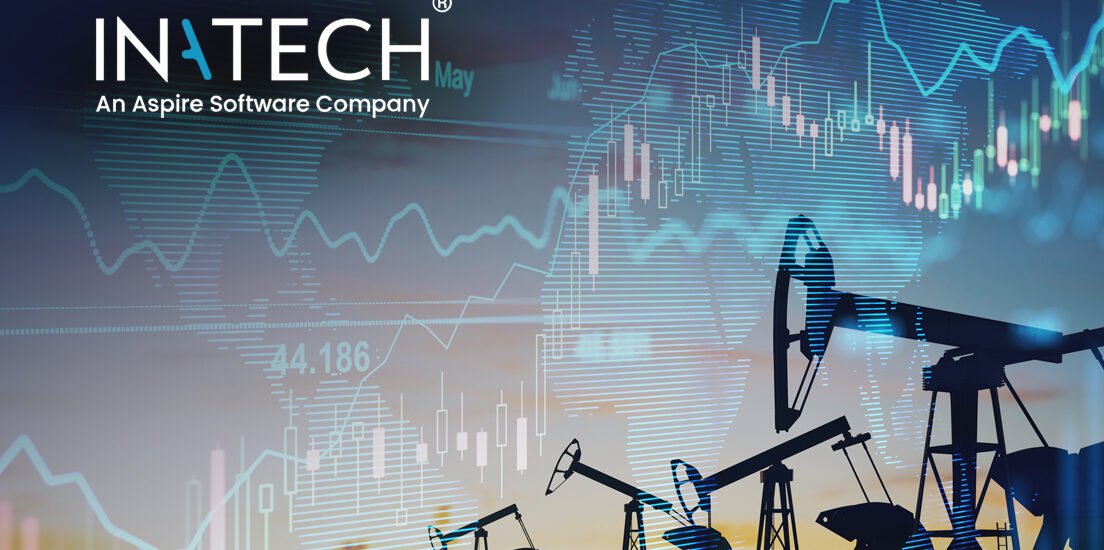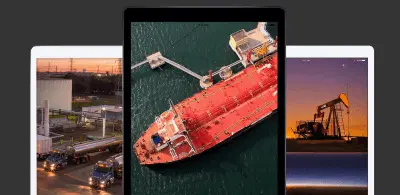How ETRM Software Enhances Market Analysis and Decision Making in Energy Trading
- January 11, 2024
- Posted by: Inatech ETRM
- Categories:

How ETRM Software Enhances Market Analysis and Decision Making in Energy Trading
The energy markets are becoming increasingly complex and volatile, so making data-driven decisions is more critical than ever. How are traders supposed to manage such a situation for optimal profits while being bogged down with day-to-day operational tasks?
Thankfully, ETRM software is here to save the day. It provides tools for market analysis, risk management, portfolio analysis, transaction management, logistics management, and much, much more – while automating many manual processes. In essence, it can be used to manage the whole value chain in the energy industry.
Major companies in the energy business use energy trading software extensively to manage risk and maximise profitability – and in this article, we explore what makes it so indispensable.
Why is ETRM Software So Important for Energy Traders?
ETRM systems are specialised software solutions designed to provide traders, analysts, and risk managers with a unified platform to manage and optimise trading activities in the energy markets.
Traders of various commodities are turning to cloud based ETRM solutions to manage their processes – instead of outdated and ineffective manual procedures or legacy software. Companies save costs as a result and benefit from more efficient, accurate operations.
Cloud based ETRM software provides:
- Streamlined operations: These systems automate and streamline front, mid and back-office operations – everything from contract management to cost analysis to credit management.
- Real-time data: Modern solutions provide access to real-time data on the markets, including weather forecasts, consumption patterns, geopolitical events and other critical information, enabling traders to make timely, evidence-based decisions.
- Risk mitigation: ETRM systems facilitate comprehensive risk analysis, helping traders identify and mitigate various risks associated with the energy market.
- Compliance: They capture, monitor and report trading activities thoroughly, ensuring compliance with regulatory requirements and reporting obligations, reducing the risk of penalties.
The ETRM software market is growing, not only due to increasing volatility but also increasing demand for energy resources and tighter regulations that demand compliance.
In fact, the global ETRM market was valued at USD 1621.37 million in 2022 and is forecast to reach USD 2122.4 million by 2028.
Let’s look at a few key features in more detail.
Market Analysis Capabilities
One of the greatest strengths of modern systems is their robust market analysis capabilities. As mentioned, the systems integrate with data providers, offering a continuous stream of data on weather forecasts, supply and demand trends, and so on.
In addition, historical data assists in identifying trends, aiding in the development of informed trading strategies. ETRM analytics tools also use predictive models to forecast future price movements, helping traders anticipate market shifts.
Our ETRM solutions come with energy analytics tools, helping traders benefit from current data and removing subjective bias from decisions.
Risk Management Strategies
Of course, being well-informed is a vital part of risk management operations, but ETRM systems don’t stop there – they provide a range of tools for identifying, assessing, and mitigating various types of risks, including price volatility, regulatory changes, counterparty risks and operational risks.
Traders can access real-time position management and assess advanced risks – while subjective bias is removed from the process, allowing the data to prevail.
Our software uses various tools to hedge against risk and protect profits. Portfolio analysis and optimisation is performed through advanced analytics and algorithmic models; numerous portfolio combinations are assessed, and optimal strategies are suggested for maximising returns while minimising risks.
It also allows traders to simulate various market scenarios, stress-test their portfolios, and adapt quickly to changing market conditions. A couple of techniques traders can execute with our software are below.
Monte Carlo Simulations
Monte Carlo simulations involve using random sampling to model the probability of different outcomes in complex systems, making them particularly useful for assessing the uncertainty and risk associated with energy markets. Users can generate numerous random scenarios based on input variables and simulate a wide range of possible market conditions.
Value at Risk (VaR)
VaR is a statistical measure that quantifies the potential loss in the value of a portfolio over a specified time horizon and at a given confidence level. Given the volatility and uncertainty of the energy markets, VaR provides a crucial tool for assessing and mitigating risks.
It lets traders estimate the maximum loss they might incur within a specified confidence interval, considering factors such as price fluctuations, market conditions, and other relevant variables.
As such, they can set risk tolerance levels, implement effective risk management strategies, and optimise their portfolios to strike a balance between potential returns and acceptable levels of risk.
Integration with Renewable Energy Sources
The integration of renewable energy sources into energy trading portfolios presents unique challenges and opportunities. ETRM systems are adapting to accommodate the distinct characteristics of renewables trading, such as the difficulties in forecasting, caused by the volatile, unpredictable nature of renewables. Advanced analytical models are required to manage these fluctuations effectively.
Grid Management is another challenge. The software enables users to anticipate fluctuations in renewable energy production, align trading strategies with generation patterns, and optimise the dispatch of energy resources to the grid.
An ETRM for renewable trading also enables traders to track and trade environmental attributes such as Renewable Energy Certificates (RECs) and carbon credits, supporting sustainability goals.
Future Advancements
The future of energy trading software will likely involve the continued integration of advanced technologies, and the adaptation to changing markets.
Artificial Intelligence
Energy trading risk management tools will increasingly incorporate AI and machine learning algorithms for greater efficiency and accuracy. AI can improve any functionality that requires data analysis, whether that’s risk management, portfolio optimisation, or anything else. It may also be able to automate trades with more accuracy.
Blockchain
Blockchain technology may be integrated in order to enhance the transparency and security of transactions. All transactions would be immutable, and smart contracts may be used for automated settlements.
Blockchain could provide interoperability and standardisation across different ETRM systems and market participants. A common, decentralised infrastructure could promote a more seamless exchange of data and assets in the energy trading ecosystem.
Renewable Energy Focus
The renewable energy sector is ever-growing, with more nations establishing targets and using financial incentives to encourage the achievement of such objectives. Other factors such as war are pushing more countries to increase their adoption of renewables for the purpose of energy security. As a result, ETRM systems will continue to adapt to handle the unique challenges and opportunities in this sector.
In Closing
ETRM systems are essential for navigating the energy markets. They analyse comprehensive, real-time data from various sources, helping traders manage risk and make the best decisions.
Inatech is a global pioneer in cloud based ETRM and fuel management solutions. We can help you turn volatility into profitability – contact us today to book a demo.




